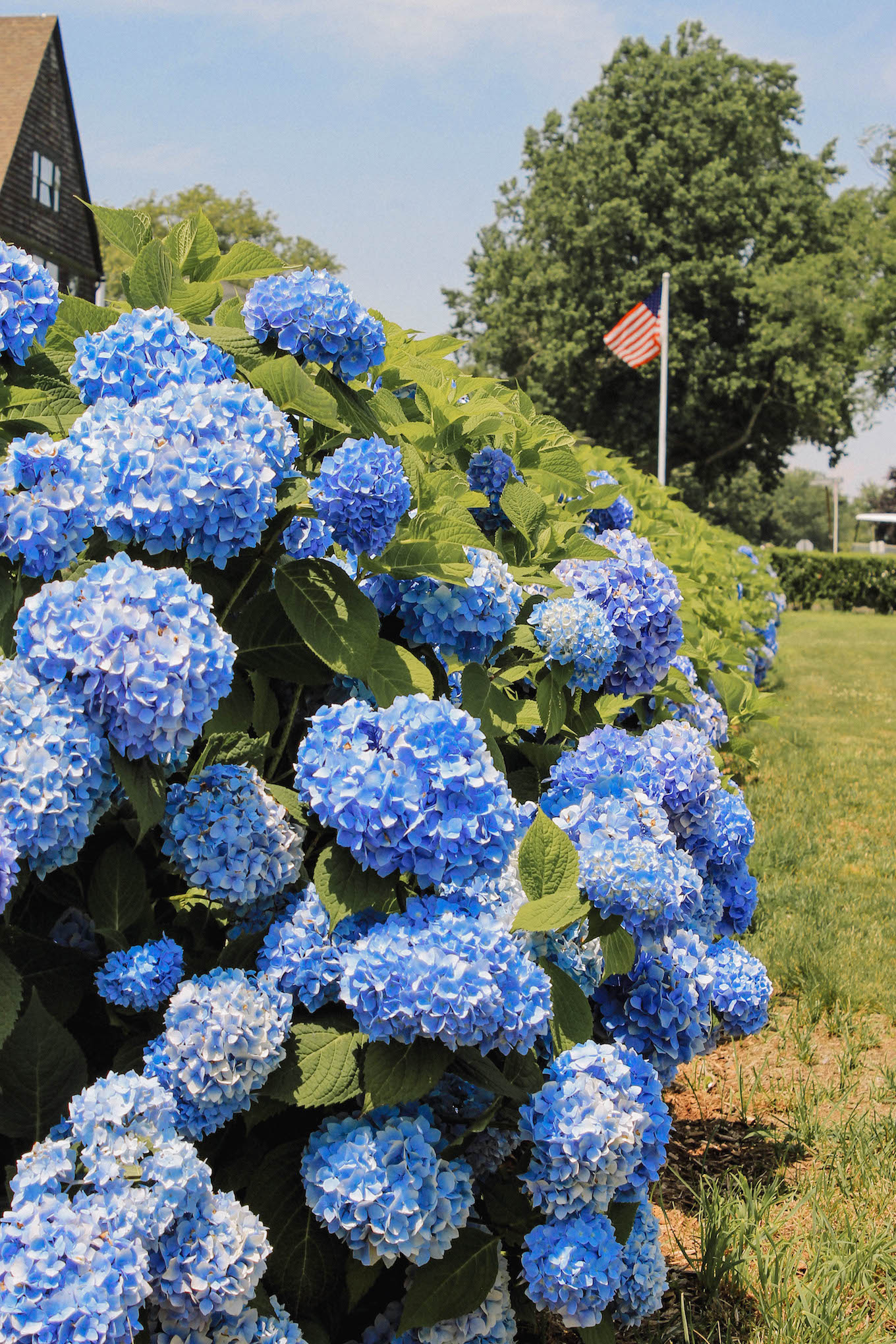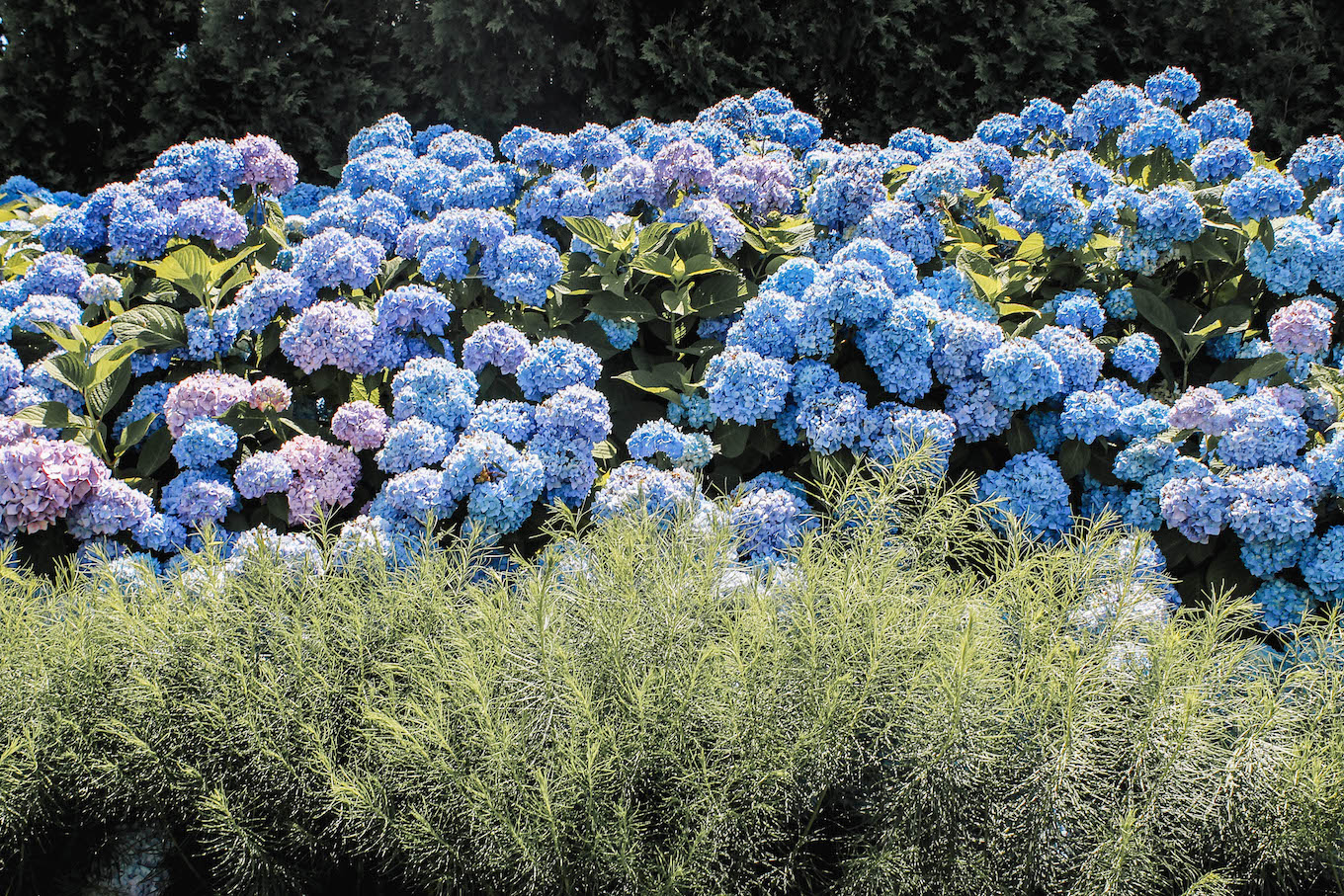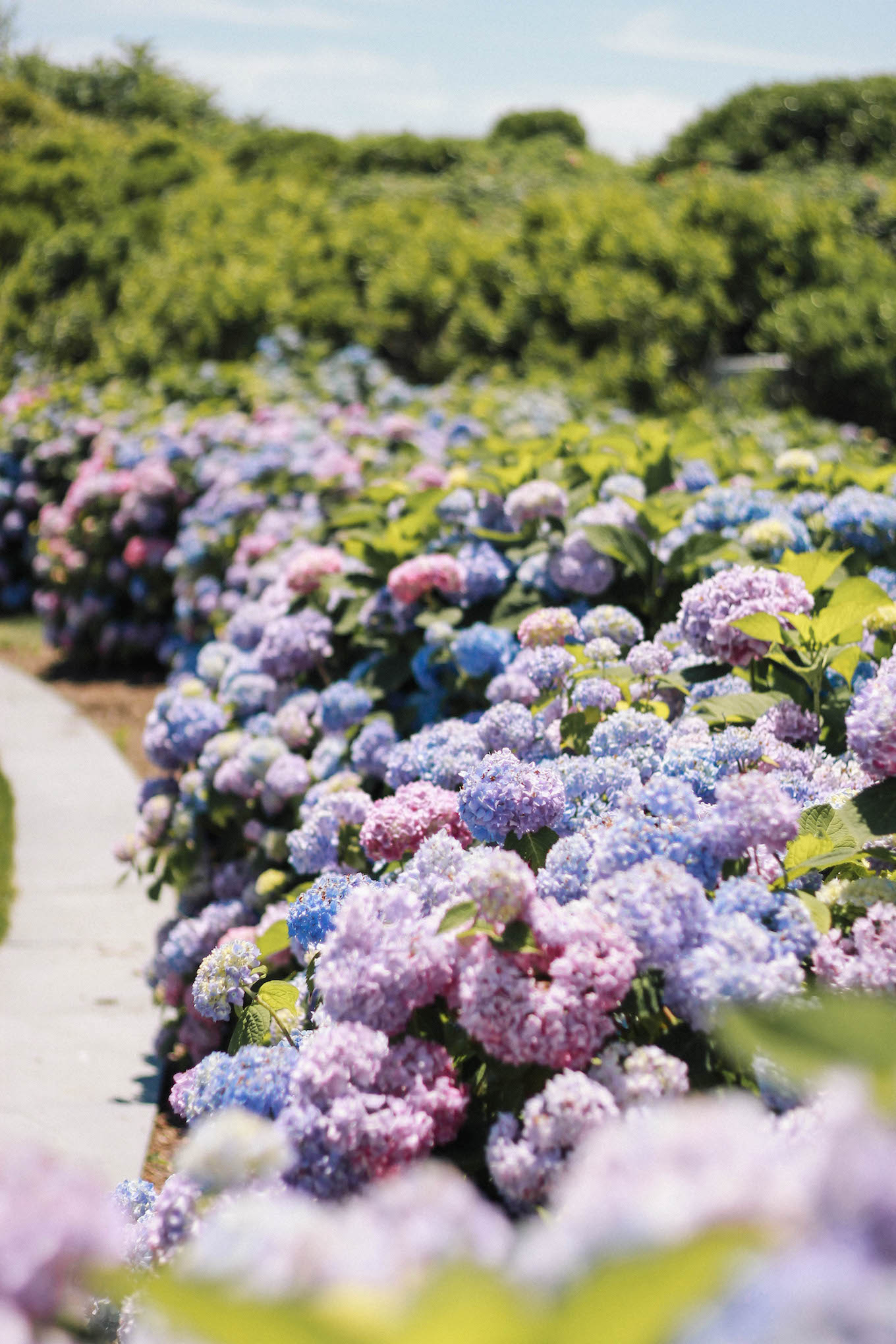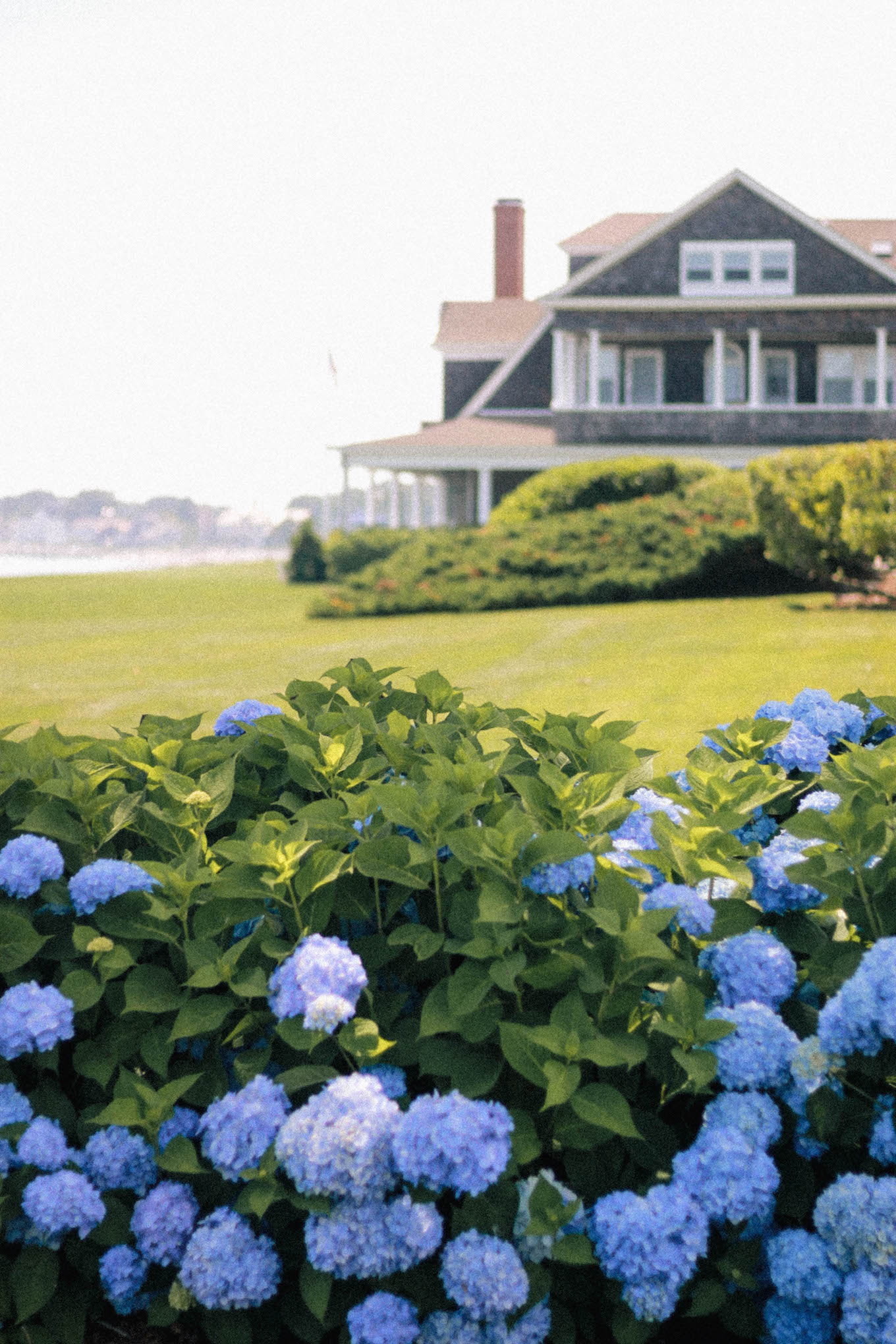05.28.2018
You know it’s summertime in New England when the hydrangeas start to bloom, and boy are they beautiful this year. The other day I posted this picture of hydrangeas on Instagram and instantly got an overwhelming amount of responses and […]
 You know it’s summertime in New England when the hydrangeas start to bloom, and boy are they beautiful this year. The other day I posted this picture of hydrangeas on Instagram and instantly got an overwhelming amount of responses and DM’s asking me about the do’s and don’ts of hydrangeas. Now instead of responding to everyone’s questions individually, I figured I’d throw together this post as a sort of a New Englander’s Guide to Hydrangeas for you all to reference and have for years to come.
You know it’s summertime in New England when the hydrangeas start to bloom, and boy are they beautiful this year. The other day I posted this picture of hydrangeas on Instagram and instantly got an overwhelming amount of responses and DM’s asking me about the do’s and don’ts of hydrangeas. Now instead of responding to everyone’s questions individually, I figured I’d throw together this post as a sort of a New Englander’s Guide to Hydrangeas for you all to reference and have for years to come.
Now let’s start this post off with a disclaimer, by no means am I a flower expert, rather this post will be a combination of information I’ve gathered from family and friends but most importantly through trial and error. Okay let’s jump right into it, shall we!
Seed vs Shrub: I mean, shrub shrub shrub all the way. Never have I ever planted a seed to get a hydrangea bush, as I’m by no means patient enough for that. In fact I did some research and found out it could take up to three years to produce a garden center sized shrub. Basically, if you want to see hydrangea flowers in your New England yard in the near future go with a shrub!
Potted vs In-Ground: First and foremost it’s important to decide how you want to plant your hydrangeas. Personally, I’ve had a better experience with in-ground hydrangeas over potted hydrangeas but that also has a lot to do with our location. I’m lucky enough to have a backyard filled with partially shaded areas, which hydrangeas are known for thriving off of. In fact, my dad and I just planted three additional bushes this past Mother’s Day and were told by the garden expert to plant the shrubs a good distance apart, so they have room to thrive and grow to a mature size. Now if you have a backyard or front yard with full sunlight almost all day, maybe consider potting your hydrangeas on your porch or doorway to protect them from the direct sunlight.
When Should You Plant Your Hydrangeas: You should aim to plant your hydrangeas in late spring, in fact right now would be a perfect time to plant them or wait until early fall. Aim for workable moist soil and mild temperatures, and at all costs avoid planting your hydrangeas directly before or after a frost.
Water, With Love and Moderation: The key to keeping your hydrangeas alive and flourishing is to make sure they are hydrated and as I said earlier, in the partial shade. You want the soil to stay moist so pull out that watering hose once a day to give them a good soaking. You can always look at the leaves to see if they are burning or drying out due to lack of water.
Make It Blue, For Your Instagram Aesthetic: You know me and my love for a cohesive Instagram aesthetic so a big concern I had when planting hydrangeas was how to guarantee that they would be blue. I quickly did some research to find that if your hydrangeas pop up pink you can easily turn them to blue by adding more acidity to your soil. If you want to get scientifical, you can check the acidity levels of your soil before planting by using a pH meter, and ideally, you’d be looking for a 5.0 acidity level. To add acidity you can easily layer soil acidifier into the ground before planting or, if already planted, near the base of the plant.
Cutting Your Blossoms: I mean, nothing says summertime in New England like a fresh bouquet of hydrangea blossoms in your kitchen. I always get excited when it’s time to cut my hydrangea blossoms but a good cutting technique is key to keeping your bouquets fresh and your shrubs thriving. I was told by my local garden center to cut hydrangea blossoms only once they’ve reached full bloom and at a 45-degree angle with a knife. Now, I’ve used scissors before with no issues, but they insisted to cutting with a knife in order to minimize damage to the shrub. They also recommend having a vase ready to go as hydrangeas should never spend much time out of water especially once having been cut.
Getting Your Hydrangeas Ready For Winter: I mean, it is way too early to start thinking of winter but I’m just going to throw this in here so when the time comes we are just prepared. In late fall, or before the first frost, is the ideal time to prepare your shrubs for winter. First and foremost remove all of the flowers from the hydrangea bush, next cut down the stalks and stems of your bush while leaving about six inches of stem left. Oh and don’t forget to re-fertilize and water the plant prior to that first frost, this step is key in making sure your shrubs will make it through the cold winter months New England brings to the table.
Okay guys, I mean this was a hefty post. A lot of information and a lot of flower talk but hopefully this gives you the inspiration to test out your own green thumb this summer. I mean when in New England, hydrangea!
Shop My Garden Collection:
Leave a Comment
3 thoughts on "New Englander’s Guide to Hydrangeas"
Leave a Reply
Newsletter
Subscribe to see our favorite pieces of New England, in your inbox weekly.







Where is that second blue dress from? Love it!
It’s from Nordstrom Rack! It’s sold out in this color but there are others, here is the link: http://bit.ly/2JfFAle
xx Aubrey
Beautiful flowers and I had no idea you can influence their color by changing the Ph!
https://4highheelsfans.wordpress.com/2018/05/25/bom-dia-lisboa/